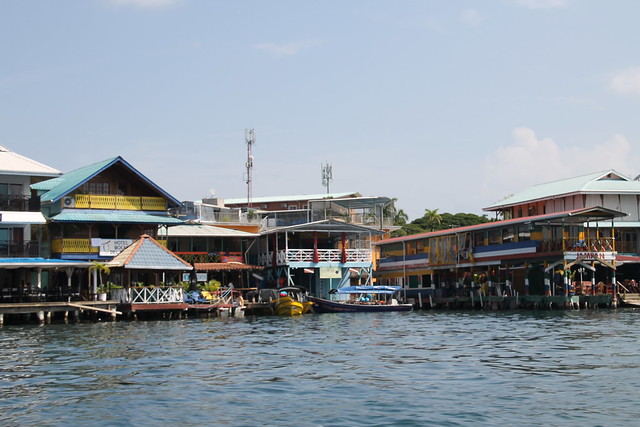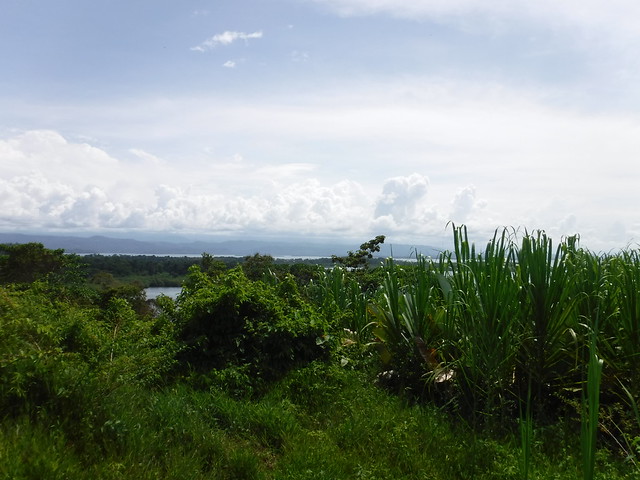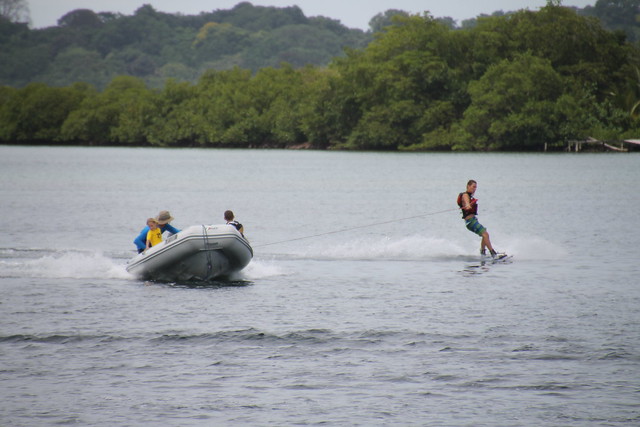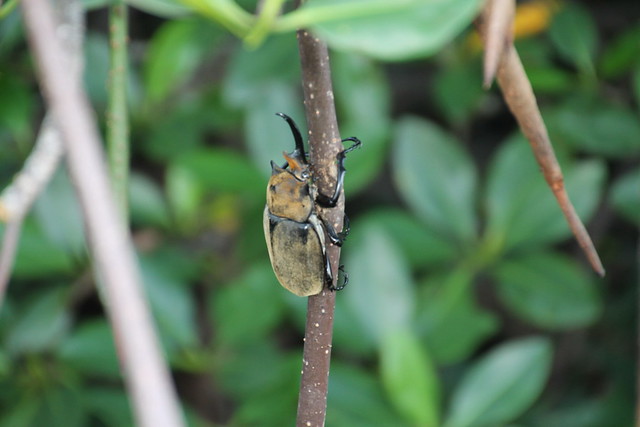The van rumbles to a stop, and you get out onto the deserted sandy road. You hear the crashing of the surf in the darkness. Behind you, the other members of your group exit the transporte colectivo. There is excited chatter from the kids. The guide leads the small group of eight into the pitch-black interior of the beach shack. There, using only a dim reddish light, he tells you all about the turtles. It is a little after 8 PM and you have just taken a rough taxi ride across Isla Colon to Bluff Beach, to see the sea turtles.
For a few short months, both the hawksbill and leatherback species lay their eggs on the beaches of Panamá. The eggs laid in April are also hatching this month. However, the guide does not guarantee that you will see anything at all. He sends out two guys, also from the Turtle Conservancy, to run ahead, and signal with a red flashlight if they find any turtles. At last, you all step out onto the beach, and start walking.
You quickly draw ahead of the others. It is very dark, with no moon and no artificial light. The only illumination comes from the stars overhead. In front of you, the big dipper is low on the horizon, reminding you of escaped slaves on the underground railroad, following the drinking gourd to freedom.
The sand is damp and uneven beneath your feet. When you step down, tiny flashes of green appear between your toes. You’ve never seen bioluminescence in the sand before.
On your left is the jungle, dark and brooding, alive with the sounds of frogs, insects, and other creatures. Occasionally, a light from a house or passing car stabs out through the trees, before being swallowed by the dense foliage.
On your right is the ocean. The black lumps of eight-foot swells break and crash in a never-ending thunderous cacophony. The white foam appears luminous in the starlight as it rushes to swallow your feet.
There is a very dreamlike quality to the night. You feel as if you could walk on forever, impervious to fatigue. All sense of time and distance are lost. The Milky Way arches above, like a thin band of clouds. Behind you, dimly heard, the rest of the group chatters away.
A small child runs on her short legs to catch up with you. She walks with you for a while, and asks, “How many stars are there?” “Billions,” you answer. “OK,” she says, and runs back to her friends, no doubt to resolve some trivial dispute. You are disappointed that she can’t appreciate the contemplation of the universe in silence.
You have been walking for maybe an hour when the guide spots the red signal lights of the runners. They have found something. You all hurry to see what they have found.
It is a leatherback turtle, digging a nest in the sand. She is by far the largest turtle you have ever seen, with a shell over five feet long. Careful to stay out of her field of view, you all kneel in the damp sand behind her to watch as she uses her back flippers to scoop the sand from her three-foot-deep hole. Presently, she stops digging. One of the runners produces a plastic bag, and places it in the hole. The guide explains that the turtle chose a bad place for her nest, and that the eggs will not hatch if they are laid in the water in the bottom. They will be reburied in a dry hole to increase the chances of survival.
A few minutes later, the first white baseball-sized egg rolls into the bag. You all sit enthralled, as if in front of a movie, as the huge turtle lays about a hundred eggs. Then, the first runner reaches into the hole, and deftly pulls the bulging bag back out without disrupting the mother, who begins the laborious task of filling the hole, completely unaware that it is empty.
The guide checks his watch, and says that it’s time to go. You stand up, sweep the sand from your clothes, and start the long walk back to the taxi. You have witnessed something rare and almost magical: a leatherback, probably the last of the season, laying her eggs on a starlit beach.






